RIAC Statewide Obstruction Removal Program
Why is RIAC undertaking this statewide obstruction removal project?
Federal Aviation Administration (FAA) regulations require RIAC to address airspace hazards near airports to ensure that runways and airports remain safe for the public and surrounding property owners. The FAA has exclusive jurisdiction over airspace and thus has implemented laws to ensure the protection for both those in the air and on the ground. These laws are commonly known as “Part 77” surfaces as they are defined in 14 CFR Part 77 – Safe, Efficient Use and Preservation of the Navigable Airspace.
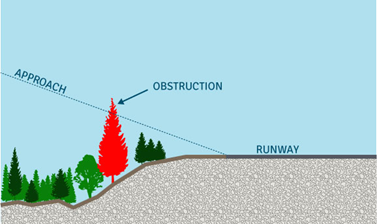
Like all airports around the country, RIAC receives the majority of its capital funding via FAA Airport Improvement Program (AIP) grants which are used for necessary improvements and maintenance of the State’s airports. As a condition of receiving these grant funds, RIAC must abide by FAA Grant Assurances. Grant Assurance 20 (Hazard Removal and Mitigation) states:
It (RIAC) will take appropriate action to assure that such terminal airspace as is required to protect instrument and visual operations to the airport (including established minimum flight altitudes) will be adequately cleared and protected by removing, lowering, relocating, marking, or lighting or otherwise mitigating existing airport hazards and by preventing the establishment or creation of future airport hazards.
In addition to the federal laws discussed above, Rhode Island State law also recognizes the importance of protecting these surfaces. Since 1999, Rhode Island law has required airport host cities/towns to establish, implement and enforce airport zoning overlays. Airport zoning overlays are designed to prevent obstructions such as trees by limiting the heights of structures around airports within the Part 77 surfaces. Despite this State law requirement, none of the airport host cities/towns have implemented effective airport zoning overlays, thus, RIAC must now pursue easements to remove the existing obstructions.
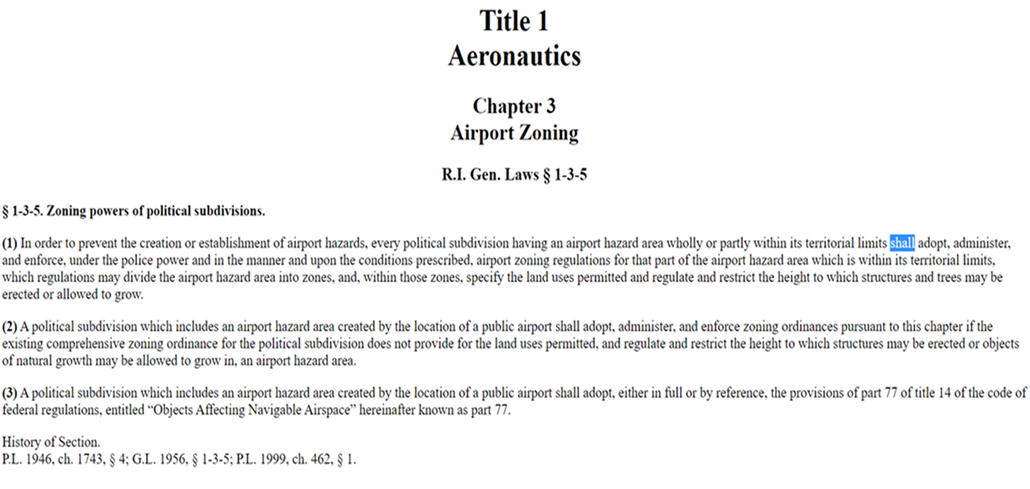
Sadly, the implications of obstructions are not a hypothetical here in Rhode Island. In 2003, two pilots were killed in a plane crash at Westerly State Airport. The National Transportation Safety Board (NTSB) cited obstructing trees as a contributing factor in the crash.


An avigation easement is a legal property right for RIAC (via its contractor) to remove existing obstructing trees and to ensure prevention of future obstructions. The negotiation of an avigation easement is conducted via an FAA-regulated process which includes the payment of fair market value to the property owner. The FAA easement program is the next step since the city/town zoning overlays failed to prevent the obstructions. If RIAC is unable to obtain the easements through this FAA process, it must use other measures to mitigate the hazard including possibly utilizing Rhode Island Department of Transportation (RIODT) to exercise eminent domain for the easements via the process allowed under State law. If these efforts prove unsuccessful, RIAC must relocate the runway thresholds which minimizes the use of the airports.
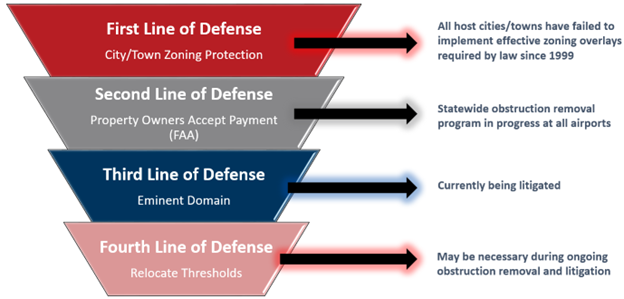
RIAC is undertaking the obstruction removal program at and around all State airports including Rhode Island T.F. Green International Airport (PVD), Quonset State Airport (OQU), Newport State Airport (UUU), Westerly State Airport (WST), North Central State Airport (SFZ) and Block Island State Airport (BID).
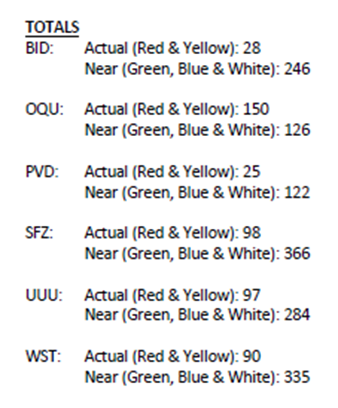
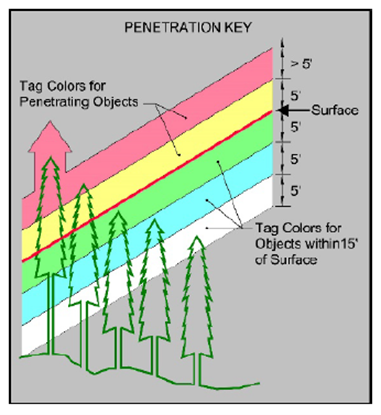
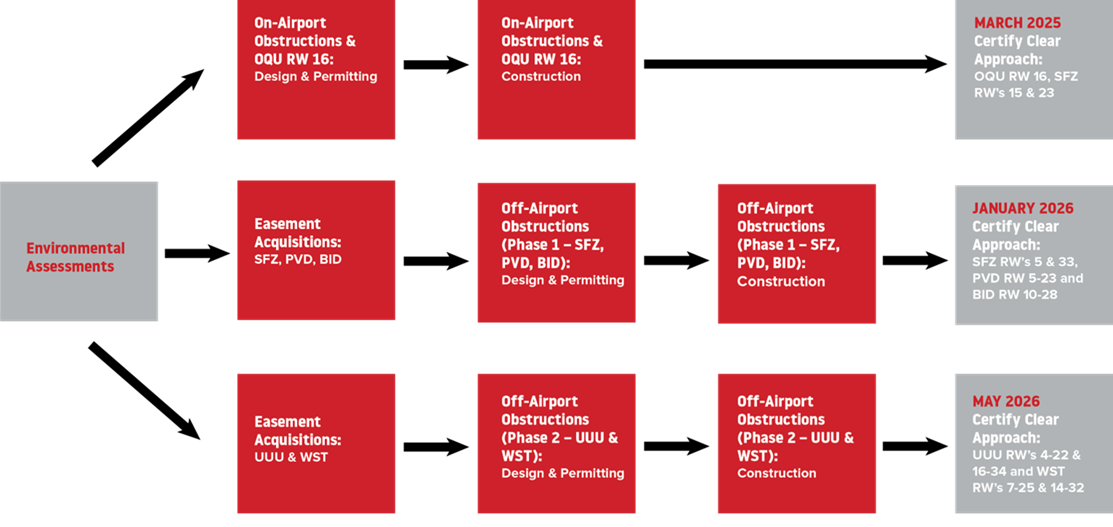
Additional FAQs
Yes, this is a routine requirement for all federally funded airports throughout the nation. Many communities understand the obligation to ensure public safety of pilots, passengers and local residents and support this shared goal of preserving safe airspace.
The height of the trees has created dangerous conditions for aircraft approaching and/or departing the runway.
(Per airport listing – on and off airport)
Yes, the federal government requires fair market compensation for agreements that result in the removal of airspace obstructions.
Trees grow over time and can intrude into airspace at local airports. RIAC works cooperatively with property owners to negotiate fair market airspace easements and replacement landscaping less likely to grow into airspace in the future.
RIAC worked closely with the FAA and environmental consultants to complete a ground and aerial survey to quantify tree height and penetration distance into the approach airspace.
Many identified trees would die if they were pruned to a safe obstruction height due to the removal of significantly more than 25% of the green foliage. Any that remained would quickly grow back.
No state taxpayer funds, only federal grant funding and airport operational budget.
As part of the FAA regulated process, RIAC consulted with arborists and wildlife experts and determined that the least impactful timeframe for migratory and nesting species would allow for this project to move forward.
No. There are no plans or proposals to expand any airport in Rhode Island. Obstruction removal is strictly related to public safety and FAA requirements that airport operators maintain safe airports and airspace.
Monitoring the obstructions surrounding state airports is a continuous project. However, RIAC expects that this current effort to mitigate airspace hazards will ensure safe airspace for the foreseeable future.
State airports play a vital role in the state and national aviation system. They are considered an asset by many communities. However, if cities or townships decide they no longer want to have an airport in their community, they are welcome to reach out to RIAC to discuss the process of airport closure.
In situations where public safety and the broader common good are at issue, state law allows for the Rhode Island Department of Transportation to assert Eminent Domain to remove obstructions and provide fair compensation for property owners in the process. Individuals declining to negotiate airspace easements to eliminate hazards and obstructions to safe air travel are encouraged to consult with their insurers regarding the possibility of uncovered personal liabilities.
The Rhode Island Airport Corporation (RIAC) is aware of a housing proposal submitted to the Town of Westerly Planning Board by Winn Properties, LLC, and has expressed its concerns to the Town Planning Board regarding incompatible land use in a letter issued on February 6, 2024. Click here for statement

